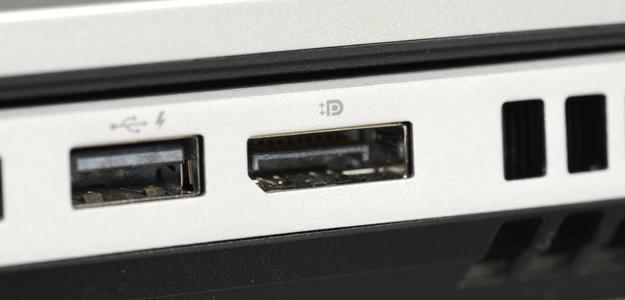The past few years have seen a convergence between TVs and gaming monitors, and CES 2023 is starting to see the two display types diverge once again. After all, the LG OLED Flex is a TV that looks like a monitor while the Samsung Ark is a monitor that looks a lot like a TV. This year, we’re starting to see the lines between TVs and monitors more clearly.
It’s not as clean-cut. Some monitors look like TVs and vice versa, but it seems the world of gaming monitors is exploring more exotic form factors and connectivity standards, while TVs are driving toward higher refresh rates, better panel technologies, and larger sizes.
Exotic form factors

The biggest difference I saw at CES this year was in the form factors of monitors. Samsung’s Odyssey lineup is a prime example. Out of the four gaming monitors Samsung announced this year, only one uses a 16:9 aspect ratio. The others either use 21:9 or 32:9, and Samsung isn’t alone. MSI has a 32:9 49-inch OLED monitor, and LG debuted a 45-inch 21:9 monitor, as well.
It was only natural when we started seeing displays like the LG UltraGear 48-inch OLED that customers would start questioning why they should buy a monitor over a TV. CES seems like the opportunity for brands to separate monitors from TVs, and the key way to do that is the form. Now, we have OLED monitors as small as 27 inches, and with many of these displays charging a premium over their TV counterparts, there hasn’t been a good reason to buy a monitor over a TV.
TVs are driving at the refresh rate, with Samsung debuting models that can handle 144Hz (though many of them supported 120Hz in the first place). I see this as a short-term marketing play, as none of the consoles can support 144Hz, and there are plenty of monitors that drive far higher. This year, the standard for many flagship gaming monitors was actually 240Hz, further separating monitors from TVs.
DisplayPort is important

One of the reasons TVs and monitors have grown so close over the past few years is the introduction of HDMI 2.1. If you’re unfamiliar, older HDMI standards meant you were locked to lower refresh rates at 4K, making monitors the de facto option for PC gaming due to their DisplayPort connection. HDMI caught up, which meant you could get 4K at 120Hz on a TV, and that isn’t too far off 4K at 144Hz on a monitor.
DisplayPort 2.1 changes that, offering far more bandwidth to drive 8K displays. Or, at least dual 4K displays. The 2023 Samsung Odyssey Neo G9 is a prime example, essentially placing two 4K panels side-by-side with a 240Hz refresh rate. DisplayPort 2.1 can drive this screen at its full resolution and refresh rate. HDMI 2.1 can’t.
Nvidia’s latest GPUs don’t support DisplayPort 2.1, but AMD cards like the RX 7900 XTX do. Over the next year, we’ll likely see a lot more DisplayPort 2.1 monitors, driving higher resolutions and refresh rates than HDMI can manage.
It’s not like 8K TVs are a pipedream, though. We’ve seen them for a few years now, and the momentum continues to grow behind them. At the moment, however, 8K TVs are driving at a general media experience where refresh rate isn’t as important. There’s still a lot of ground to cover for TVs with even managing streaming 8K content in homes. In the world of gaming monitors, they’ll need that DisplayPort 2.1 connection to drive higher refresh rates for gaming.
Still an awkward middle ground

I won’t pretend like TVs and gaming monitors now fit into neat boxes separated from each other. Products like the LG OLED Flex and even Samsung’s recently announced Odyssey Neo G7 are proof that there’s still some blurring between what makes a monitor, a monitor, and what makes a TV, a TV.
However, there’s at least a solid effort to separate these two product categories, especially at the high end. As OLED continues to mature in monitors, we’ll see even greater separation, particularly in smaller screen sizes that we’re just starting to see at CES.
Editors’ Recommendations









